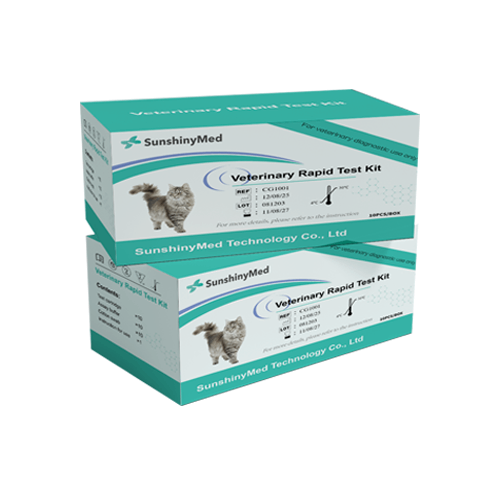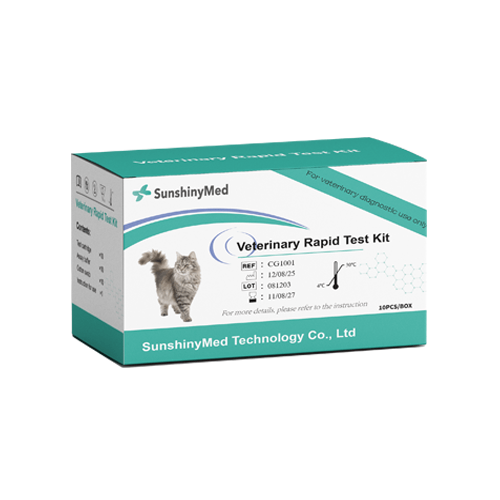


Feline H.pylori Antigen Rapid Test
The SunGoldTM Feline H.pylori Antigen Rapid Test for cats is a rapid on-site diagnostic product based on colloidal gold immunochromatography technology. By coating specific antibodies on a test strip, when the Helicobacter pylori antigen in the cat fecal sample binds to the colloidal gold-labeled antibody, an immune complex is formed that moves along the chromatographic membrane and develops color at the test line, enabling rapid identification of the infection status.
Production Features
Non-invasive testing
Intuitive results
Trace amounts of antigen can be detected
Weak cross-reaction effect
Product Parameters
| Production Name | SunGoldTM Feline H.pylori Antigen Rapid Test |
| Usage | Veterinary Diagnostics |
| Detection Method | Chromatographic Immunoassay/Lateral Flow Immunoassay |
| Target Analyte | Feline H.pylori Antigen Rapid Test |
| Specimen Type | fresh feces or rectal swab sample |
| Storage Temperature | 4-30°C |
| Result Time | 5-10 Minutes |
| Packaging Specification | Individually sealed, 10 tests in total. |
| Format | Cassette |
| Shelf Life | Up to Expiration Date Indicated on Package |
Product Performance
| Sensitivity | 97.97% |
| Specificity | 96.97% |
| Accuracy | 96.82% |
Description
This method does not rely on laboratory equipment and is suitable for animal hospitals, pet clinics, and home pet care at all levels. It can complete the test in minutes and is particularly suitable for the rapid diagnosis and monitoring of non-specific gastrointestinal symptoms such as Helicobacter pylori-related chronic gastritis, recurrent vomiting, and loss of appetite, facilitating early intervention and treatment. In recent years, the research on Helicobacter pylori co-infection has received increasing attention, especially in cats with decreased immunity or long-term gastrointestinal dysfunction, where the detection rate has increased year by year. Traditional detection methods such as culture or PCR have high technical barriers, long time periods, and complex sample processing, which limit their application in routine veterinary diagnosis and treatment. Helicobacter pylori infection can trigger chronic gastric mucosal inflammation, cell apoptosis, and gastric acid imbalance, leading to long-term damage to gastric structure, mucosal erosion, and even ulcers. It also carries a certain degree of infectious risk, necessitating early detection and timely intervention. This test kit, through its rapid antigen recognition mechanism, significantly improves diagnostic efficiency and can be used inconjunction with treatment efficacy assessment and recurrence monitoring, providing scientific support for gastrointestinal health management in cats.
How to use?
Check the product contents and make sure the test operation is under the room temperature (15–30℃) before testing.
Unseal the extraction tube containing the buffer.Place the extraction tube in the workstation.
Use the swab to collect some fresh canine feces or fecal sample from its rectum. And then put the swab into the buffer.
Rotate the swab more than 10 times.Close the cap of the buffer tube.
Take the test device out of the aluminum foil bag and place it on a clean and flat table. Add three drops (about 90 μL) of specimen (mixed sample) vertically into the specimen well(S) of the test device.
Interpretation of Results
Positive (+): The presence of both C line and T line, regardless of T line being strong or faint.
Negative (-): Only clear C line appears.
Invalid: No colored line appears in C region, regardless of T line's appearance.
Materials provided:
10 test cards
10 vials of assay buffer
10 bags of swab stick
1 package insert


